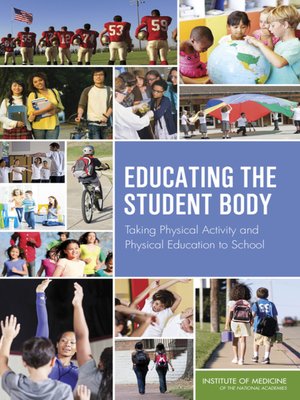Educating the Student Body
ebook ∣ Taking Physical Activity and Physical Education to School
By Institute of Medicine

Sign up to save your library
With an OverDrive account, you can save your favorite libraries for at-a-glance information about availability. Find out more about OverDrive accounts.
Find this title in Libby, the library reading app by OverDrive.



Search for a digital library with this title
Title found at these libraries:
| Library Name | Distance |
|---|---|
| Loading... |
Physical inactivity is a key determinant of health across the lifespan. A lack of activity increases the risk of heart disease, colon and breast cancer, diabetes mellitus, hypertension, osteoporosis, anxiety and depression and others diseases. Emerging literature has suggested that in terms of mortality, the global population health burden of physical inactivity approaches that of cigarette smoking. The prevalence and substantial disease risk associated with physical inactivity has been described as a pandemic.
The prevalence, health impact, and evidence of changeability all have resulted in calls for action to increase physical activity across the lifespan. In response to the need to find ways to make physical activity a health priority for youth, the Institute of Medicine's Committee on Physical Activity and Physical Education in the School Environment was formed. Its purpose was to review the current status of physical activity and physical education in the school environment, including before, during, and after school, and examine the influences of physical activity and physical education on the short and long term physical, cognitive and brain, and psychosocial health and development of children and adolescents.
Educating the Student Body makes recommendations about approaches for strengthening and improving programs and policies for physical activity and physical education in the school environment. This report lays out a set of guiding principles to guide its work on these tasks. These included: recognizing the benefits of instilling life-long physical activity habits in children; the value of using systems thinking in improving physical activity and physical education in the school environment; the recognition of current disparities in opportunities and the need to achieve equity in physical activity and physical education; the importance of considering all types of school environments; the need to take into consideration the diversity of students as recommendations are developed.
This report will be of interest to local and national policymakers, school officials, teachers, and the education community, researchers, professional organizations, and parents interested in physical activity, physical education, and health for school-aged children and adolescents.







